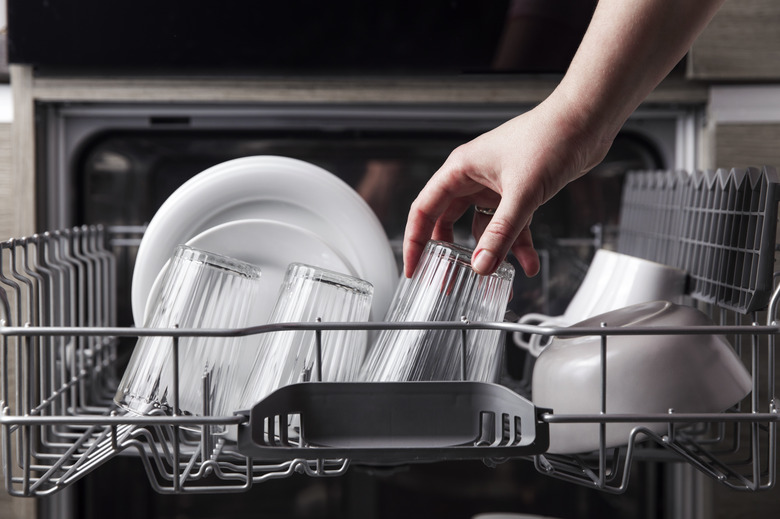Troubleshooting A Dishwasher That Doesn't Dry The Dishes
A dishwasher has an internal heating element that dries your dishes after the washing cycle is done. This element is located on the bottom of the tub. If your dishwasher doesn't dry properly, troubleshoot the issue before contacting a service technician. Repair fees are often expensive, and you can save money by doing the work yourself.
Here's how to troubleshoot a dishwasher that isn't drying dishes properly.
First, Check the Drying Settings
First, Check the Drying Settings
The first thing to check is the settings you use on your dishwasher's manual, if you don't understand them completely.
There are two main dishwasher drying methods: Hot rinse and heated-dry. Some models rely by default on a very hot rinse as the last step in the cleaning process, because the hot water evaporates quickly. This works well for glass and metal, but plastic and Teflon-coated dishes retain some water because air dry settings don't actively dry your dishes. Set your machine for a heated-dry setting, if it's available.
Tip
If your dishes still aren't dry after the cycle is done, use a rinse aid to assist the drying process. Rinse aids reduce the amount of moisture in the tub. Check the rinse aid dispenser and add more if it's empty. Always unload the bottom rack, first. Water trapped in cups on the top rack can fall onto dishes on the bottom rack. Don't overload the dishwasher as this can prevent air from freely circulating around your dishes.
Check the Heating Element
Check the Heating Element
Your dishwasher won't dry your dishes properly if the heating element is defective or burned out. Disconnect the dishwasher from the power source, and visually inspect the heating element. See if it has any burned out or broken areas. You must replace the heating element if it's defective since you usually can't fix this element.
If the element looks fine, remove the panel underneath the door and take out the heating element. Look at the terminals and connectors and clean or replace these components if corroded. Check at the terminals for power, to rule out a flaw in the wiring. Then disconnect the heating element and set your multimeter to its resistance (ohms) setting. A typical element should read 15 to 30 ohms. If yours registers as either zero or infinity, the element must be replaced.
Test the Thermostat
Test the Thermostat
The thermostat regulates both the drying cycle and water temperature. Test the thermostat by selecting the shortest wash cycle at the highest temperature setting possible. Open up the dishwasher and see if the interior is warm during the drying cycle. If not, the thermostat is defective. You usually can't fix this component. Order replacement parts from a dishwasher parts dealer.
Check the Drying Fan
Check the Drying Fan
A drying fan circulates warm air around the dishwasher in some older or higher-priced models. The drying fan often makes a squealing or groaning noise when it's turning on, if that's the source of your problem. Unplug the dishwasher from the outlet and remove the main access panel. Examine the drying fan and see if debris is preventing it from moving freely. Clean it. See if any of the fan blades are rusted out. If the fan isn't moving at all, it's probably burned out, and you need a new one.
